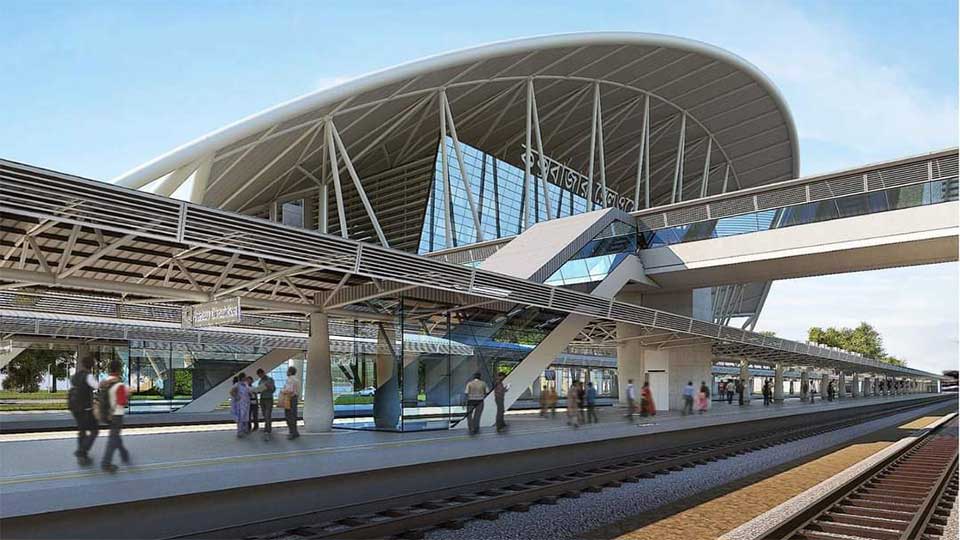
Dhaka: The long-awaited Chattogram–Cox’s Bazar railway promised faster travel, tourism growth, and regional development. However, less than two years after its launch, the 103.57-kilometer track has become a deadly route — claiming dozens of lives in a string of avoidable accidents.
On a scorching August afternoon, a CNG-run autorickshaw carrying five people became trapped on the tracks at Dhalirchara in Ramu’s Rashidnagar area. Moments later, the Dhaka-bound Cox’s Bazar Express, running at around 70 km/h, slammed into the vehicle and dragged it nearly a kilometer before stopping. By then, the rickshaw was nothing more than mangled steel. All five passengers died on the spot.
This tragedy was not an isolated one. In April, a motorcyclist died at an unprotected level crossing in Eidgaon’s Palakata area. A few months earlier, in November, two young men were crushed by a train at another unmanned gate in Ramu.
Reports citing data from the Railway Police showed that at least 30 people have been killed on this line in the first 20 months of operation — mostly at unguarded crossings.
The project, costing BDT 11,335 crore, was inaugurated with great fanfare on December 1, 2023, despite still being incomplete. Passenger trains now operate four times daily in each direction. Yet, critical safety systems remain missing.
Out of 72 level crossings, 56 lack any gatekeeper or barrier, while only 16 have minimal protective measures. At unmanned points, the railway authority has simply posted warning signs reading: “Caution! No gatekeeper at this gate. Cross at your own risk. The railway authorities will not be held responsible for accidents.”
The Dhalirchara site — where five lives were lost — was one of these so-called “unmanned” crossings. “Some crossings are staffed, others are not,” reports cited Chattogram Railway officials saying. “We assign gatekeepers based on traffic volume. If it increases, we’ll review the situation.” However, residents argue that both traffic and fatalities have already surged.
Across the nine sections of the railway, none are fully protected. In the Islamabad–Ramu stretch alone, there are 17 crossings — but only one has a gatekeeper. The Ramu–Cox’s Bazar segment has eight crossings, again with just a single guarded post.
The southern sections are especially dangerous. Dulahazara–Islamabad has 12 crossings, 11 of which are unmanned. Chakaria–Dulahazara has nine, guarded at only three points. Villages and busy bazars sit directly along these routes, where trains thunder through with no warning except for hand-painted signboards.
Further north, the Harbang–Chakaria stretch has four crossings, half staffed. Lohagara–Harbang has five but only one gatekeeper. Satkania–Lohagara has three manned out of eight, while Dohazari–Satkania manages four. Even the shortest segment, Hashimpur–Dohazari, has a single crossing — and it too is unguarded.
Locals have repeatedly appealed to the Chattogram Divisional Railway officials for barriers and alarm systems, but their letters have gone unanswered, added reports.
The line has also taken a toll on wildlife — several elephants have reportedly died in train collisions since operations began. Reports cited experts saying that these deaths are preventable. Civil engineers stressed the need for basic safety technology.
“Installing bells, flashing red lights, or automatic signals is simple and affordable,” reports cited a former civil engineer faculty member of CUET saying. “It’s baffling why these weren’t included in the project. I doubt proper traffic assessments were even done. The busiest crossings should always have barriers and full-time staff.”
Reports also cited Railway officials saying, 46 of the original crossings have already been replaced with underpasses. “Gatekeepers were assigned based on approved traffic surveys,” the official added, according to reports. “However, local agencies — LGED, municipalities, union councils — often expand or pave roads without notifying us, which creates safety gaps. After recent accidents, a committee has been formed to reassess high-risk crossings.”
- T









